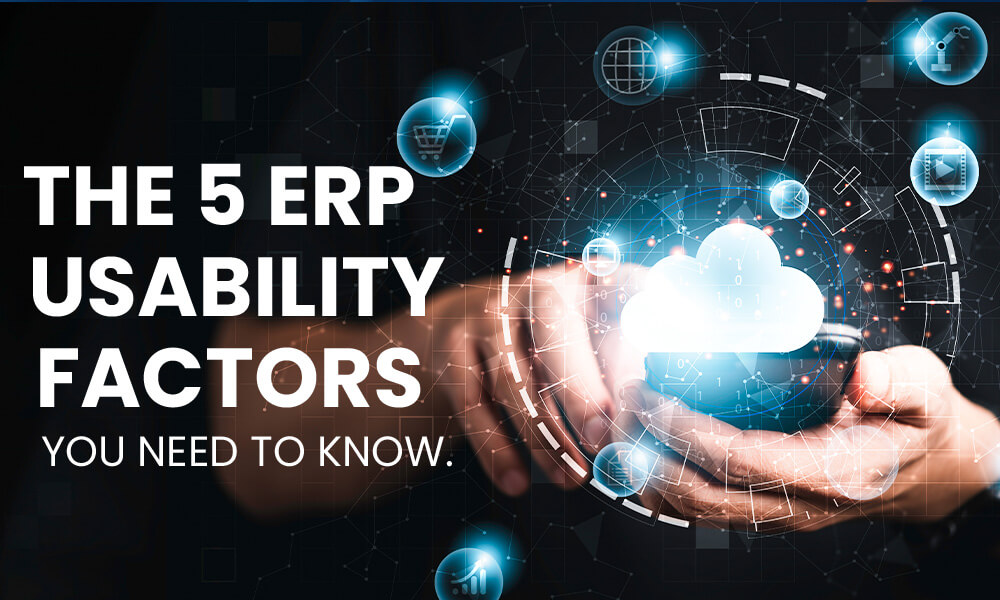Planning to enhance your business management technology or transition from a legacy system to a modern, cloud-based solution is a significant business move. In these times of economic uncertainty, the value of implementing intelligent technology systems that empower employees and foster organizational connectivity becomes even more apparent.
Following such cases, a well-designed ERP system ensures that your technology investments reap solid, long-term returns. To gain a competitive edge, companies are increasingly turning to ERP systems to streamline their operations and enhance productivity. But what is ERP usability?
Understanding ERP usability is paramount to justify your technology investments and its ROI. If you’re finding it challenging to define ERP usability and its functionality, we will demystify it all in this blog.
Additionally, we will introduce you to valuable SourcePro resources that will guide you in identifying the key usability factors critical to the success of your business.
Let us first define ERP usability.
The ease of use of an ERP system to perform daily tasks and access the required information is referred to as ERP usability. It is crucial because these software solutions are designed to streamline and integrate various business processes, including finance, human resources, supply chain management, and more.
Key aspects of ERP usability include:
- Intuitive User Interface
The first and foremost factor when evaluating an ERP system is its usability. Is it intuitive? Can your employees quickly adapt to it, or does it require extensive training? An ERP system with a user-friendly interface ensures that even newcomers can navigate through the software with ease. SourcePro understands the significance of ERP usability and offers an intuitive solution that simplifies complex processes. With a seamless user interface, your employees can hit the ground running. - Accessibility Anytime, Anywhere
In today’s digital age, the world is your office. With cloud-based ERP software, you can access your ERP system from virtually anywhere. This flexibility not only boosts productivity but also ensures that your team can collaborate efficiently. SourcePro’s cloud-based ERP software provides access to your data without any hassle, working from the office, home, or traveling. - Customization and Adaptability
ERP systems need to be tailored to your unique business needs. An out-of-the-box solution might not always align with your processes. This is where the ERP implementation guide comes into play. SourcePro understands every business is unique. We offer flexibility and customized ERP solutions to fit your specific requirements. The adaptability of an ERP system ensures that it aligns seamlessly with your workflow. - Scalability
Your business is not stagnant, so why should your ERP system be? ERP investment should grow with your company, allowing you to scale as needed. SourcePro’s ERP solution is designed with scalability in mind. As your business expands, so can your ERP system without the need for an entire overhaul. This not only saves you money but also ensures that your ERP solution remains relevant as your organization evolves. - Comprehensive Support and Training
Even the most user-friendly ERP system can pose challenges during the initial transition. To ensure a smooth ERP implementation, it’s crucial to have comprehensive support and training resources at your disposal. SourcePro offers a wealth of resources, including training sessions and customer support, to guide you through every step of the ERP journey.
ERP Usability Evaluation Checklist
To streamline your ERP decision-making process, our ERP Usability Evaluation Checklist is the comprehensive compass that will guide you through a labyrinth of features and benefits across four vital dimensions: Ease of Use and Navigation, Ease of Task Completion, Ease of Administration, and Ease of Integration or Scalability.
- User-centric Design: Imagine navigating ERP applications with ease no more tedious training sessions. With user-centric design, you can effortlessly navigate through the ERP system.
- Platform Neutrality: Access the ERP system from any browser, anywhere, and at any time. With mobile apps and a secure internet connection, the ERP world becomes your oyster.
- Relational Database: Enjoy immediate access to real-time, accurate information. An ERP system assumes the role of an exclusive repository of factual data, significantly enhancing the quality of decision-making processes.
- Automated Processes: Automation is a pivotal element within the ERP system, streamlining various functions such as billing, approval processing, document management, and order fulfillment. The implementation of automated processes enhances efficiency, reduces manual intervention, and minimizes errors in these critical business operations.
- Artificial Intelligence with Machine Learning: The incorporation of artificial intelligence and machine learning in this ERP system represents a significant advancement. It not only enhances data accuracy but also reduces the necessity for manual data entry in numerous vital business processes. This feature is pivotal for staying competitive in a technology-driven business environment.
- Bidirectional Sync Engine and Data Exchange Services: The ERP system’s bidirectional sync engine and data exchange services play a crucial role in automating data imports and exports between the ERP application and external systems or data sources. This facilitates the seamless exchange of information, ensuring the consistency of data across diverse platforms.
- Scalability: For businesses with global aspirations, this ERP system offers scalability that accommodates security and accounting requirements. It can support the growth of large multinational organizations while maintaining robust security measures and comprehensive accounting capabilities.
Among the many features and corresponding benefits outlined in the checklist, one stands out as particularly significant: “Proven Usability with Third-Party Validation.” When existing customers and expert industry analysts have independently verified an ERP system’s ease of use, it provides compelling evidence for selecting this solution. This validation underscores the reliability and effectiveness of the system, instilling confidence in its capacity to meet the needs of the business.
In conclusion, when considering an ERP solution provider for your business, remember the pivotal role of ERP usability. SourcePro partners with you to streamline business operations, with their robust, user-friendly interface,scalabile, and comprehensive ERP. Make a smart ERP investment today, and propel your business towards greater efficiency and success.
